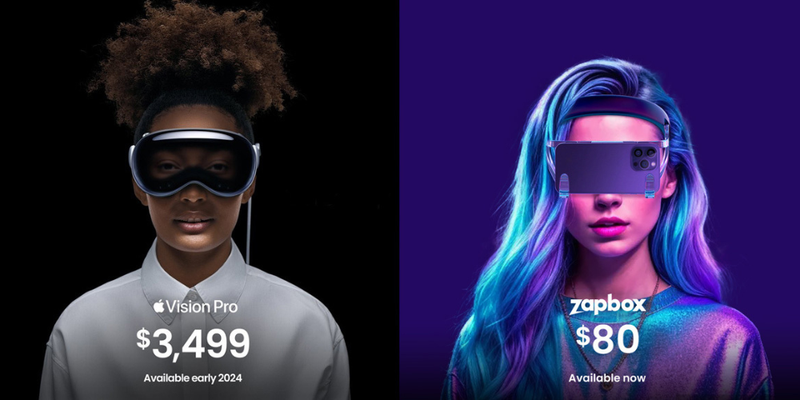With the long-awaited release of Apple’s Vision Pro headset, Spatial Computing and mixed reality more specifically are well and truly back in the limelight. But with the headset not set for release in 2024, and the price tag set at $3,499, how can brands and businesses take advantage of the medium, but in a more affordable and accessible way – that’s available right now?
Here’s my take on why affordable, smartphone-powered mixed reality can be the starting point for the mass adoption of Spatial Computing.
Advancements in smartphone technology
Smartphones have become increasingly powerful over the years, with significant advancements in processing power, graphics capabilities, and camera quality. These technological improvements enable smartphones to track the world around you through your device's camera, processors, and motion sensors to create immersive 3D experiences in app via the web.
With smartphones becoming increasingly more capable, they provide a cost-effective way to leverage Spatial storytelling, right now without the need for expensive hardware.
Widespread smartphone adoption and portability
Smartphones, unlike the major players in the headset market (Quest, Magic Leap, HTC Vive etc) already have mass adoption – Statisca says smartphone penetration was at 6.3 billion in 2022, a number that Zuckerberg can only dream of for Quest. This widespread adoption creates a fertile market for an affordable mixed reality that utilizes smartphones, and is ready for brands and businesses to take advantage of.
Yes, Apple is the dominant player in the space, but brands need to tap into both iOS and Android users to truly reach a global audience, and drive ROI from their campaigns. It’s cross-platform, smartphone-powered headsets like Zapbox, that will enable them to do that, without the need to buy multiple headsets.
Likewise, smartphones are highly portable too, I can’t remember the last time I left my house without mine without immediately rushing back into the house to retrieve said device. What this means though is that mixed reality content can be experienced anytime, anywhere, without the need for carrying additional bulky equipment.
Growing interest in mixed reality and Spatial Computing
If the Apple release is anything to go by, it’s that there’s clearly a mass market for Spatial Computing, and spatial storytelling more broadly. Immediately after the release, my personal LinkedIn feed was flooded with posts about the Vision Pro, peppered with key takeaways and reasons for and against why the headset would succeed (or fail).
Alongside this though was a real backlash to the price and accessibility of the headset – it just doesn’t scale to meet the needs of brands and businesses who need wider adoption in markets to devise and develop content that has a real impact on their target audience.
Vibrant developer ecosystem
Let's not forget about the developer ecosystem for Spatial Computing either. It’s now at a much more mature level than when I started working AR (over 6 years ago, yikes!). With the advent of AR content authoring tools from Snap, Spark, Apple’s ARKit and Google’s ARCore, and indeed our Zapworks AR platform, designers and developers are much more familiar with creating compelling and immersive experiences for smartphones than they were 3 or 4 years ago.
Creators, brands and businesses more readily understand the value of short-form immersive experiences on hand-held devices, it’s now about capitalising on those experiences and bringing them into mixed reality to increase engagement, interactivity, and of course, in a more affordable way.
What it all means for brands
With Apple also publishing their Principles of Spatial Design, brands and businesses will need to take note, lean in and embrace the technology and understand how they can effectively leverage headsets like the Vision Pro for branded activations, e-commerce and experiential retail.
But, if brands want to get ahead of the game, now. It’s headsets like Zapbox, Xreal Air, and indeed the Quest 3 that can get them quicker.
The possibilities really are limitless and it’s up to creative marketers and brands to start defining the rules of this new spatial storytelling canvas.
 Dave Mather
Dave MatherHead of Marketing, Zappar
